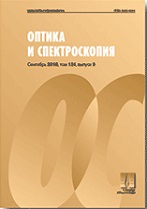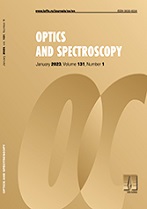|
This article is cited in 12 scientific papers (total in 12 papers)
Optics of low-dimensional structures, mesostructures, and metamaterials
The effect of ligands and solvents on nonradiative transitions in semiconductor quantum dots (a review)
V. L. Ermolaev
ITMO University, St. Petersburg, 197101, Russia
Abstract:
Data on quantum yields and photoluminescence decay times of quantum dots have been collected. Photoprocesses that occur in quantum dots are compared with photoprocesses occurring in complex organic molecules in the condensed phase. The review consists of the introduction, three parts, and conclusions. The first two parts are devoted to quantum dots that are formed by indirect-gap semiconductors. The first part is devoted to data on the photoluminescence quantum yields and decay times of carbon quantum dots, and Table 1 presents selected values and short comments to these data. Table 2 of the same part presents data on fast relaxation processes in the same objects. In the second part, Tables 3 and 4, as well as the following text, contain similar information about silicon quantum dots. Data on photoprocesses in quantum dots formed by direct-gap semiconductors are collected in the third part. Data on the photoluminescence yields, decay times, and relaxation processes are listed in Tables 5 and 6. Particular attention in the present review is given to the effect that a change in the frequency of vibrations in the environment of a quantum dot has on the photoluminescence yields and the rate of relaxation processes between electronic levels in bands, which indicates that the inductive resonance mechanism of nonradiative transitions is applicable to these systems.
Received: 03.04.2018
Citation:
V. L. Ermolaev, “The effect of ligands and solvents on nonradiative transitions in semiconductor quantum dots (a review)”, Optics and Spectroscopy, 125:2 (2018), 247–263; Optics and Spectroscopy, 125:2 (2018), 256–274
Linking options:
https://www.mathnet.ru/eng/os939 https://www.mathnet.ru/eng/os/v125/i2/p247
|


| Statistics & downloads: |
| Abstract page: | 48 | | Full-text PDF : | 20 |
|





 Contact us:
Contact us: Terms of Use
Terms of Use
 Registration to the website
Registration to the website Logotypes
Logotypes








 Citation in format
Citation in format 
